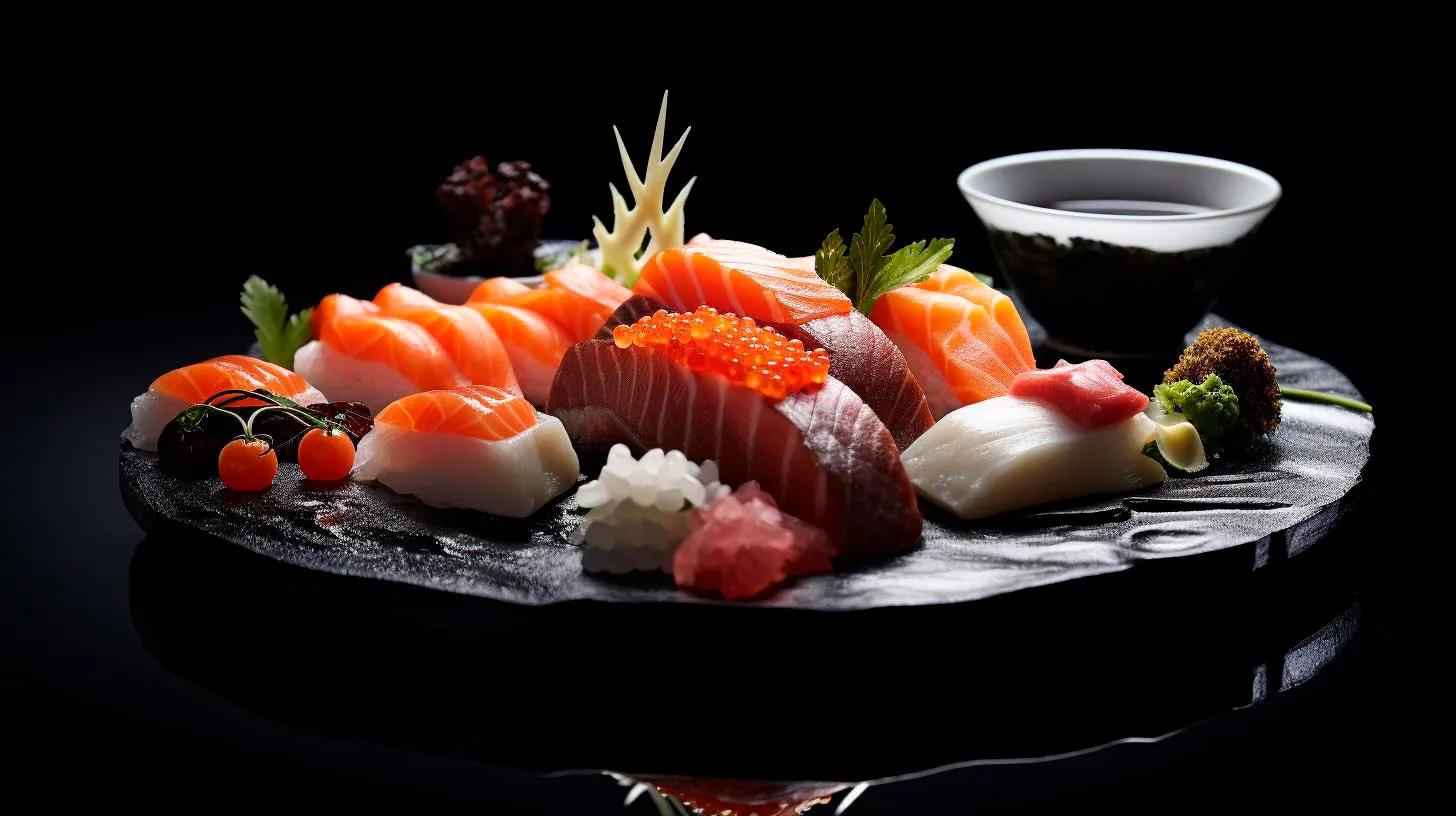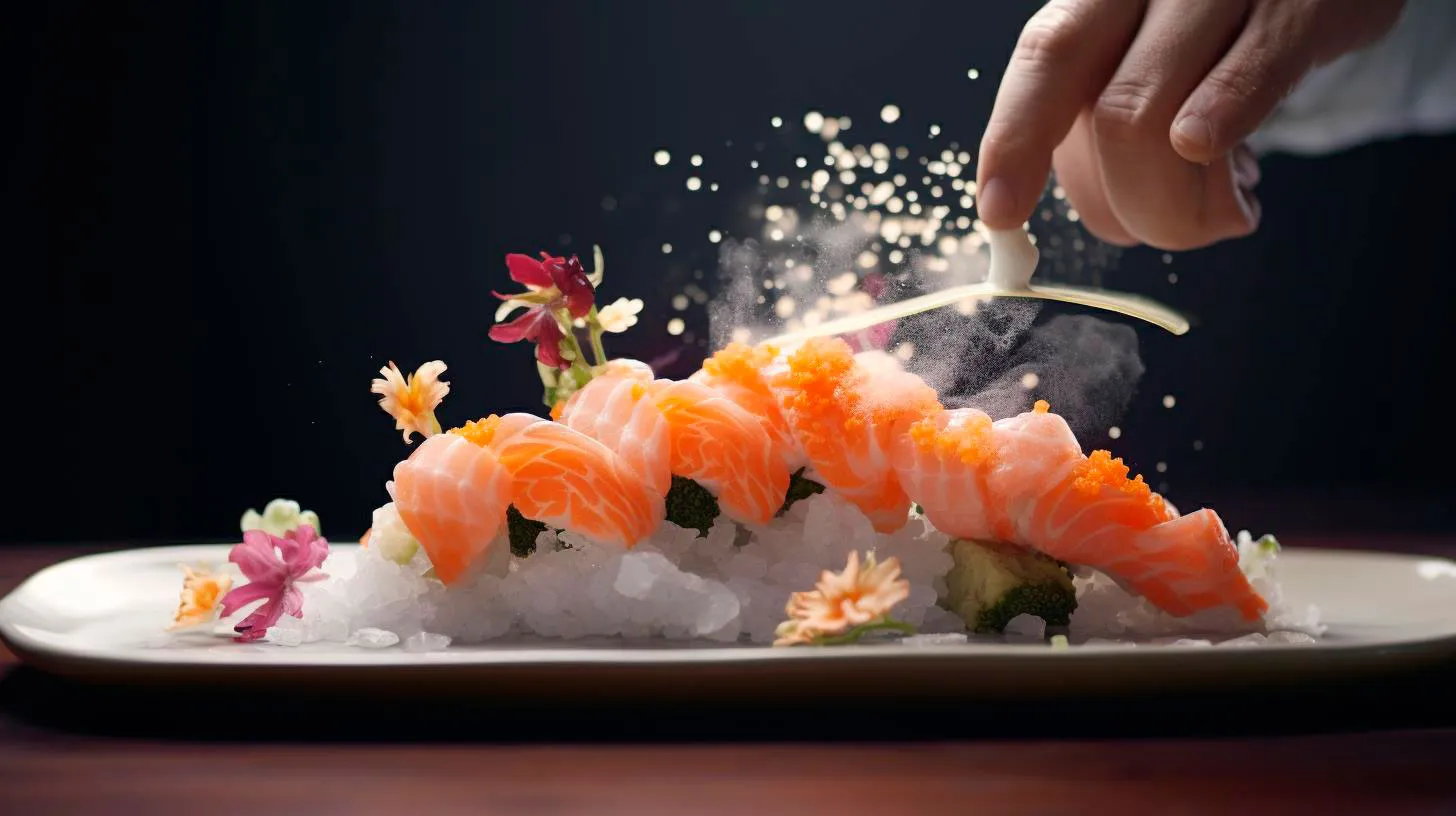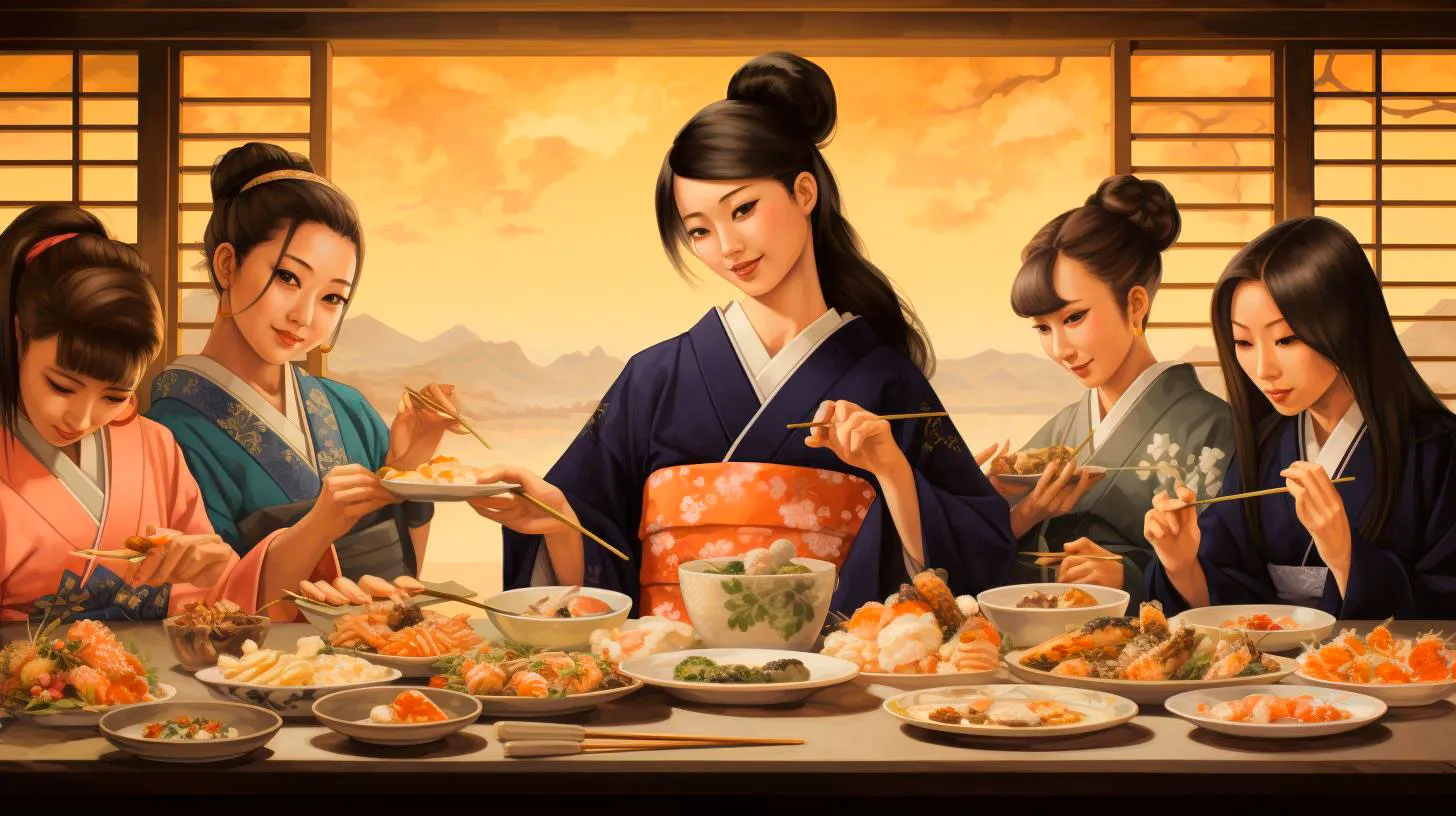Transforming Ordinary Meals: Making Sushi an Exciting Dining Adventure
Let’s dive in!
The Mastery Behind Sushi
Sushi originated in Japan and has evolved over centuries, combining flavors, textures, and presentation techniques to captivate food enthusiasts worldwide. Behind the scenes, sushi chefs train for years to perfect their craft, mastering the art of slicing fish, preparing rice, and creating beautifully handcrafted rolls. This level of skill and attention to detail ensures that each bite of sushi is a work of art.
Key Takeaways:
- Sushi is an art form that has been perfected over centuries in Japan.
- Sushi chefs undergo extensive training to deliver the highest quality and creativity in their creations.
Types of Sushi
While many of us are familiar with traditional sushi rolls, such as nigiri or maki, the world of sushi expands far beyond these staples. Let’s explore some of the popular types of sushi:
1. Nigiri:
Nigiri sushi is a classic and elegant type of sushi, consisting of a slice of raw fish or seafood placed over a mound of vinegary sushi rice. The simplicity of this dish allows the natural flavors of the fish to shine, offering a pure and authentic experience.
2. Maki:
Maki sushi, commonly known as sushi rolls, features seaweed (nori), rice, and a variety of fillings such as fish, vegetables, or other seafood. Maki rolls are usually wrapped in a bamboo mat and then sliced into bite-sized pieces. These colorful rolls not only taste incredible but also provide a visually appealing presentation.
3. Sashimi:
For those who prefer their sushi without rice, sashimi is the perfect choice. Sashimi consists of thinly sliced, fresh fish or seafood, served on its own or with a side of soy sauce and wasabi. It allows you to experience the pure essence of the fish, showcasing its texture, flavor, and freshness.
4. Temaki:
Temaki, also known as hand rolls, are cone-shaped sushi rolls filled with a combination of ingredients. These rolls are meant to be eaten immediately after being freshly made, offering a delightful crunch from the nori and a burst of flavors with each bite.
5. Uramaki:
Uramaki rolls, also known as inside-out rolls, are a Westernized version of sushi. Unlike traditional rolls, the rice is on the outside, wrapped around the seaweed and fillings. Uramaki rolls open up a world of possibilities, allowing chefs to get creative with flavors, textures, and toppings.
Key Takeaways:
- Sushi comes in various forms, including nigiri, maki, sashimi, temaki, and uramaki.
- Each type offers a unique taste and presentation, allowing you to explore different flavors and textures.
Transforming Ordinary Meals
Now that you understand the different types of sushi, let’s explore how you can transform your ordinary meals into extraordinary dining experiences using sushi as the star:
1. Sushi Nights at Home:
Invite friends or family for a sushi night at home, where everyone can get involved in the sushi-making process. Provide fresh ingredients, sushi-grade fish, and all the necessary tools such as bamboo mats and knives. Get creative with different fillings and encourage everyone to try their hand at rolling their own sushi. It’s a fun and interactive way to bond while enjoying the art of sushi-making.
2. Sushi Tasting Menus:
Many renowned restaurants offer sushi tasting menus, allowing you to sample a variety of sushi creations that showcase the chef’s skill and creativity. These menus often feature seasonal ingredients and unique preparations, giving you an opportunity to savor rare flavors and combinations. Treat yourself to a sushi tasting menu for a special occasion or if you simply want to indulge in an unforgettable culinary experience.
3. Sushi Fusion:
While traditional sushi is undoubtedly incredible, there are various sushi fusion options available that showcase a blend of flavors and culinary traditions. Try sushi with a twist, such as sushi burritos, sushi burgers, or even sushi pizza. These innovative creations combine the essence of sushi with other popular cuisines, resulting in a delightful fusion of flavors.
Key Takeaways:
- Host sushi nights at home to immerse yourself in the art of sushi-making with friends and family.
- Indulge in sushi tasting menus at renowned restaurants to experience a wide range of flavors and culinary techniques.
- Explore sushi fusion options to enjoy a unique twist on traditional sushi.
In conclusion, sushi offers more than just a delicious meal; it provides an exciting dining adventure full of cultural richness and culinary artistry. From the mastery of sushi chefs to the countless types of sushi available, the world of sushi is vast and captivating. By incorporating sushi into your dining experiences, you can elevate ordinary meals and embark on a culinary journey that will leave your taste buds craving for more.
Engaging Kids with Eye-Catching Plates: A Fun Approach to Healthy Eating
One simple yet effective way to do this is by creating eye-catching plates that capture their imagination and entice them to eat more nutritiously.
The Power of Visual Appeal
Humans are visual creatures, and this principle applies to food as well. Studies have shown that visually appealing meals can increase our enjoyment and satisfaction with what we eat. When it comes to children, colorful and beautifully arranged plates can be particularly influential. By presenting food in an engaging manner, we can capture their attention and encourage them to try new flavors and textures.
To create eye-catching plates, consider the following strategies:
- Use a variety of vibrant fruits and vegetables: Incorporate a rainbow of colors that appeal to children’s innate curiosity. Include red strawberries, orange carrots, yellow bell peppers, and green broccoli to make the plate visually stimulating.
- Create playful shapes: Use cookie cutters or small knives to shape fruits and vegetables into fun and recognizable figures such as stars, hearts, or animals. Kids will love the novelty of eating a dinosaur-shaped broccoli floret or a star-shaped watermelon piece.
- Arrange food in appealing patterns: Experiment with arranging food in different ways to create visually interesting patterns on the plate. For example, you can create a smiley face using cherry tomatoes as eyes, a carrot slice as the mouth, and broccoli florets as hair.
The Benefits of Engaging Plates
Engaging plates not only make mealtime more fun, but they also offer a range of benefits for children’s nutrition and overall well-being. Here are some key advantages:
- Increased vegetable consumption: By presenting vegetables in an attractive way, children are more likely to eat them willingly. Studies have shown that kids who are exposed to visually appealing plates filled with various vegetables consume more of these nutritious foods.
- Exposure to new foods: Engaging plates encourage children to try new foods and expand their palate. By presenting ingredients in a creative and intriguing way, kids become more open to exploring different flavors and textures.
- Improved health outcomes: A balanced and varied diet rich in fruits and vegetables is essential for children’s growth and development. By creating eye-catching plates, we can ensure that our little ones consume a wide range of nutrients necessary for their well-being.
Takeaways for Parents
There’s no denying that getting kids to eat healthily can be a struggle, but with a bit of creativity, we can turn mealtimes into enjoyable experiences for the whole family. By creating visually appealing plates, we can engage our children’s senses and encourage them to explore nutritious foods with excitement.
Here are some key takeaways to keep in mind:
- Make it colorful: Use a variety of vibrant fruits and vegetables to create a visually stunning plate.
- Be creative: Experiment with shapes and arrangements to make the food look fun and appealing.
- Encourage exploration: Use engaging plates to introduce new foods and flavors to expand your child’s palate.
- Promote healthy habits: Instill a love for nutritious foods early on, setting the foundation for a lifetime of healthy choices.
Remember, engaging plates can transform mealtime from a mundane chore to an exciting adventure. So, the next time you’re struggling to get your child to eat their vegetables, get creative and watch their appetite soar!
Creating Memorable Sushi Experiences: The Power of Visual Appeal
In this blog post, we will explore the significance of visually appealing sushi and how it enhances overall dining experiences for sushi enthusiasts.
The Art of Sushi Presentation
Just like any other art form, the presentation of sushi is an art in itself. With its exquisite arrangement of colorful ingredients, sushi can be a feast for the eyes, setting the stage for a remarkable culinary experience. Here’s how visual appeal contributes to creating unforgettable sushi encounters:
- Elevates anticipation: Beautifully presented sushi creates a sense of anticipation and excitement even before taking the first bite. It stimulates the senses and ignites curiosity about the flavors to follow.
- Enhances perceived freshness: Visually appealing sushi gives the impression of freshness, making it more appetizing and enticing for diners. The vibrant colors and meticulously crafted presentation add to the perception of high-quality ingredients.
- Engages the dining experience: When sushi is a visual masterpiece, it engages diners beyond just the act of eating. The artistic aesthetics prompt conversations and contribute to a shared dining experience.
The Impact of Social Media
In today’s digital era, social media platforms have become powerful marketing tools, greatly influencing consumer choices. A visually stunning sushi presentation can be a game-changer, attracting attention and enticing food enthusiasts to share their experiences. Consider these statistics:
- Instagram: Sushi-related hashtags have been used over 10 million times, highlighting the massive interest and social media presence of sushi lovers worldwide.
- Visual appeal drives engagement: Studies show that posts with visually captivating content receive 94% more views and engagement compared to text-only posts.
- Positive user-generated content: Stunning sushi presentations are more likely to be shared and create a positive buzz, leading to increased brand awareness and customer footfall.
Key Takeaways for Sushi Restaurants
If you own or manage a sushi restaurant, here are some key takeaways for creating memorable sushi experiences:
- Invest in the art of presentation: Train your sushi chefs to master the art of visually appealing sushi presentation. The effort invested will pay off through increased customer satisfaction and positive reviews.
- Embrace creativity: Experiment with unique arrangements, colors, and garnishes to create visually stunning sushi that stands out from the crowd. Encourage your chefs to unleash their creativity.
- Optimize for social media: Understand the power of social media and promote your visually appealing sushi on platforms like Instagram, Facebook, and Twitter. Encourage customers to share their experiences online.
- Stay consistent: Ensure that the taste and quality of your sushi match the visual appeal. Consistency is key in creating memorable dining experiences that keep customers coming back.
Remember, the power of visual appeal extends beyond the world of sushi. It applies to all aspects of the culinary industry and can significantly impact customer perception and satisfaction. By understanding and harnessing the art of presentation, you can create memorable dining experiences that leave a lasting impression on sushi enthusiasts around the globe.
Sushi Presentation: Elevating the Art of Plating
In this blog article, we explore the importance of sushi presentation and how it elevates the dining experience to a whole new level.
The Importance of Sushi Presentation
When it comes to sushi, presentation is key. The visual impact of a beautifully presented sushi platter enhances the overall dining experience, captivates the senses, and creates a lasting impression. Here are some reasons why sushi presentation deserves special attention:
- Enhances Appreciation: A well-plated sushi dish allows diners to fully appreciate the craftsmanship behind each piece. From the color combinations to the placement of ingredients, every detail is crucial in creating an aesthetically pleasing plate.
- Reflects Japanese Culture: Sushi presentation embodies the principles of Japanese culture, such as harmony, simplicity, and balance. The artful arrangement of sushi rolls, sashimi slices, and garnishes reflects the respect for nature and the pursuit of perfection.
- Creates Anticipation: Beautifully presented sushi ignites curiosity and anticipation among diners. The carefully chosen colors, textures, and arrangement build excitement, making each bite a delightful surprise.
The Artful Techniques
Sushi plating involves various techniques that showcase the creativity and skill of the chef. Let’s explore some of these techniques:
Color Play:
Colors play a vital role in sushi presentation. The combination of vibrant hues not only adds visual appeal but also enhances the flavors. Chefs use a wide variety of ingredients such as fish, vegetables, fruits, and edible flowers to create a visually stunning palette.
Textures and Shapes:
The use of different textures and shapes adds depth and dimension to the sushi platter. From the delicate smoothness of sashimi to the crunchy texture of tempura, each component contributes to the overall eating experience, both visually and in terms of mouthfeel.
Garnishing:
Garnishes act as the final flourish, elevating the sushi presentation to an art form. Chefs use ingredients like microgreens, tobiko (flying fish roe), sesame seeds, and sauces to add contrasting colors, flavors, and textures. These details create a harmonious visual symphony on the plate.
Key Takeaways
Now that we understand the significance of sushi presentation, let’s summarize the key takeaways:
- The art of sushi presentation enhances the overall dining experience.
- It reflects Japanese culture and culinary traditions.
- Colors, textures, and garnishes are carefully used to create visually stunning plates.
- Each sushi dish tells a story through its presentation.
- Plating techniques showcase the chef’s creativity and skill.
Remember, when enjoying sushi, take a moment to appreciate the meticulous effort that goes into the presentation. The art of plating elevates sushi from a mere dish to a feast for the eyes and taste buds.



